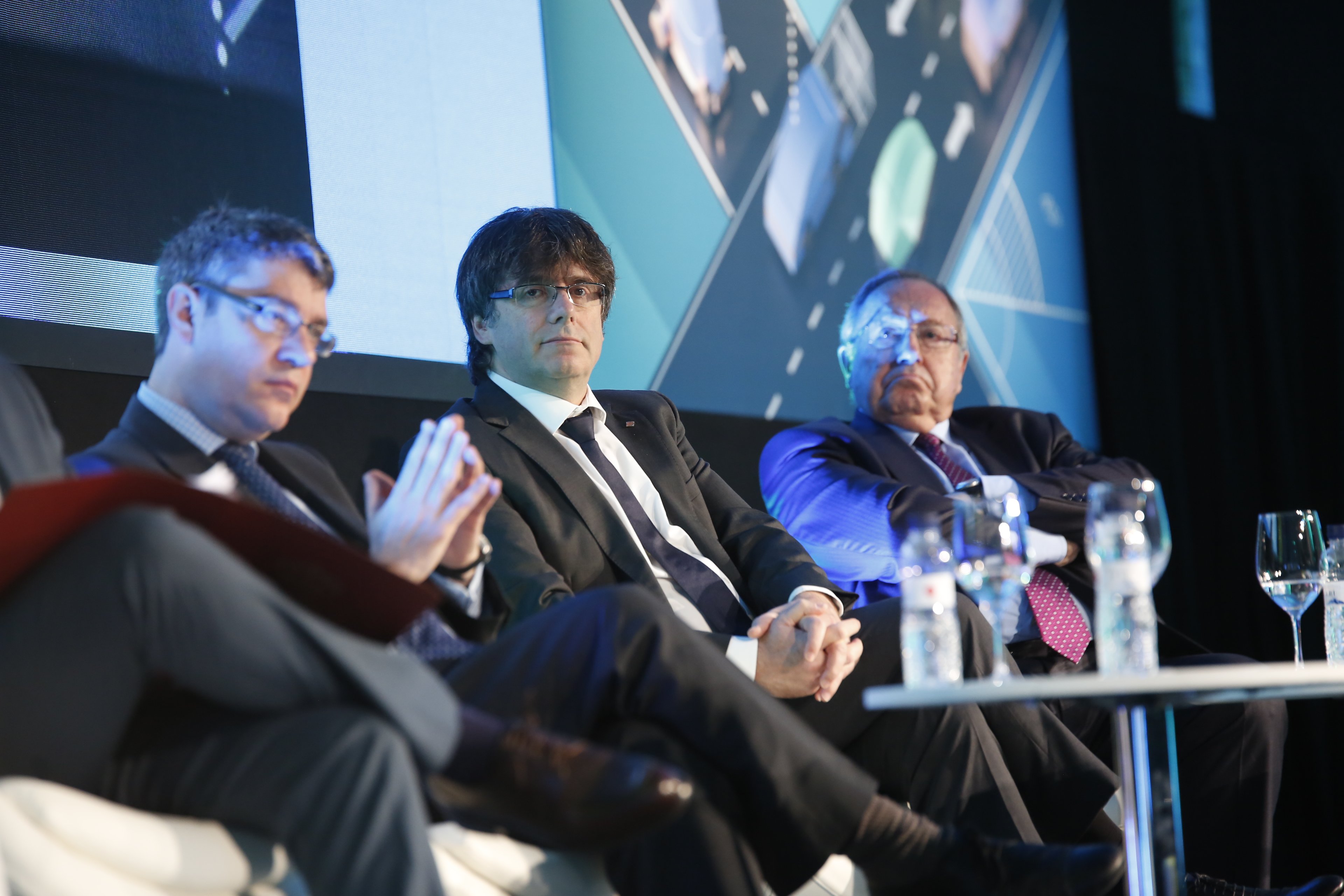Catalan president Carles Puigdemont is not Princess Leia, and nor is he fighting against the Death Star, but one of the techniques that his team is considering for use by the Together for Catalonia list in December's Catalan elections, borrows an idea from the famous scene in the original Star Wars film when robot R2D2 projects a hologram with a message for rebel leader Obi-Wan Kenobi.
The use of this technology in election campaigns is not science fiction any more. In fact, in the French presidential election this year, the La France Insoumise leader Jean-Luc Mélenchon used it with remarkable success. And he was not the first.
Sources have told El Nacional that the campaign for the Together for Catalonia list is considering these methods, as a response to the unprecedented handicap the list faces in the Catalan parliamentary election race because their leading candidate, Carles Puigdemont, is in exile in Brussels. The president has a European Arrest Warrant and an extradition request hanging over his head.
Puigdemont's legal situation does not prevent him from being a candidate to the elections, and nor does it bar the vice president and the government ministers, whether imprisoned or exiled. The Spanish electoral law (LOREG) does exclude some of those convicted by the justice system from the right to run for election: those convicted of offences for which they are required to serve prison time, as well as all those found guilty of offences such as rebellion, or offences against the public administration and the institutions of the State. The members of the government are thus not currently affected by these restrictions, as they have not yet been tried.
However, although they are able to stand for election, the situation raises obvious difficulties. Even though the LOREG states that the principle of equality has to be maintained between candidates in the electoral contest, as soon as the president sets foot on Catalonia soil, the warrant for his arrest will be made effective.
This circumstance has forced the directors of the Together for Catalonia campaign to use their imagination, and the technology has placed some curious alternatives on the table.
Mélenchon's simultaneous meetings
The use of holograms was one of Jean-Luc Mélenchon's innovations in his French presidential campaign, enabling him to take part in different meetings at the same time. On 18th April, in his last major campaign event before the elections, Melenchon gave a meeting in the city of Dijon which was simultaneously presented in Nantes, Clermont-Ferrand, Grenoble, Montpeller, Nancy and on the island of Reunió.
The Together for Catalonia campaign is studying this proposal, which has its pros and cons. Among the negative factors, the main one is the high cost, but also the technical complexity and the obstacles and errors that it can entail, and which Mélenchon was affected by.
For this reason, there are members of the Catalan group's campaign team who are more inclined to use more familiar methods such as giant screens, allowing the president to participate in the campaign events in a more secure and affordable way.
These are just some of the questions that the candidature's strategists are facing. Other aspects that will have to be faced include the candidate's participation in the televised electoral debates.
The tight core of the campaign team includes some of those closest to Puigdemont in the Catalan government's Presidency department: Elsa Artadi, general director of interdepartmental coordination; Jaume Clotet, general director of communication in the Catalan government; and Josep Rius, cabinet secretary. But this group will be expanded with professionals supporting the independent candidates and members of the Catalan European Democratic Party (PDeCAT) who have joined the list.
For the moment, one of the first aspects to be decided is the list's headquarters in Barcelona, as the candidature will need an electoral base in Brussels and another in the Catalan capital, which under no circumstances will be the headquarters of the PDeCAT. In fact, the campaign managers are searching for a similar base to that used by the Together for Yes grouping in the 2015 Catalan elections- a street-level office, following the model of North American election campaigns.

